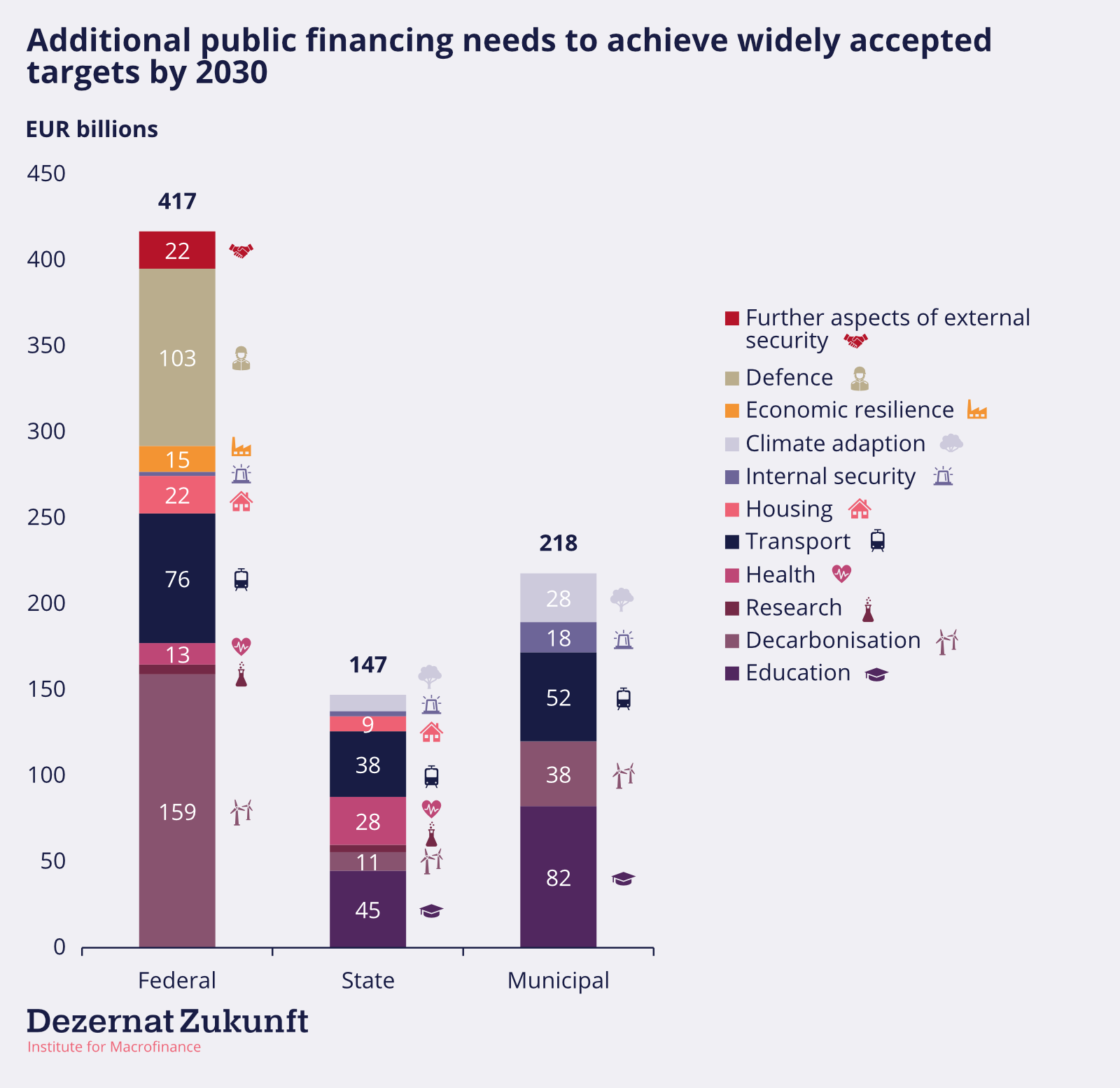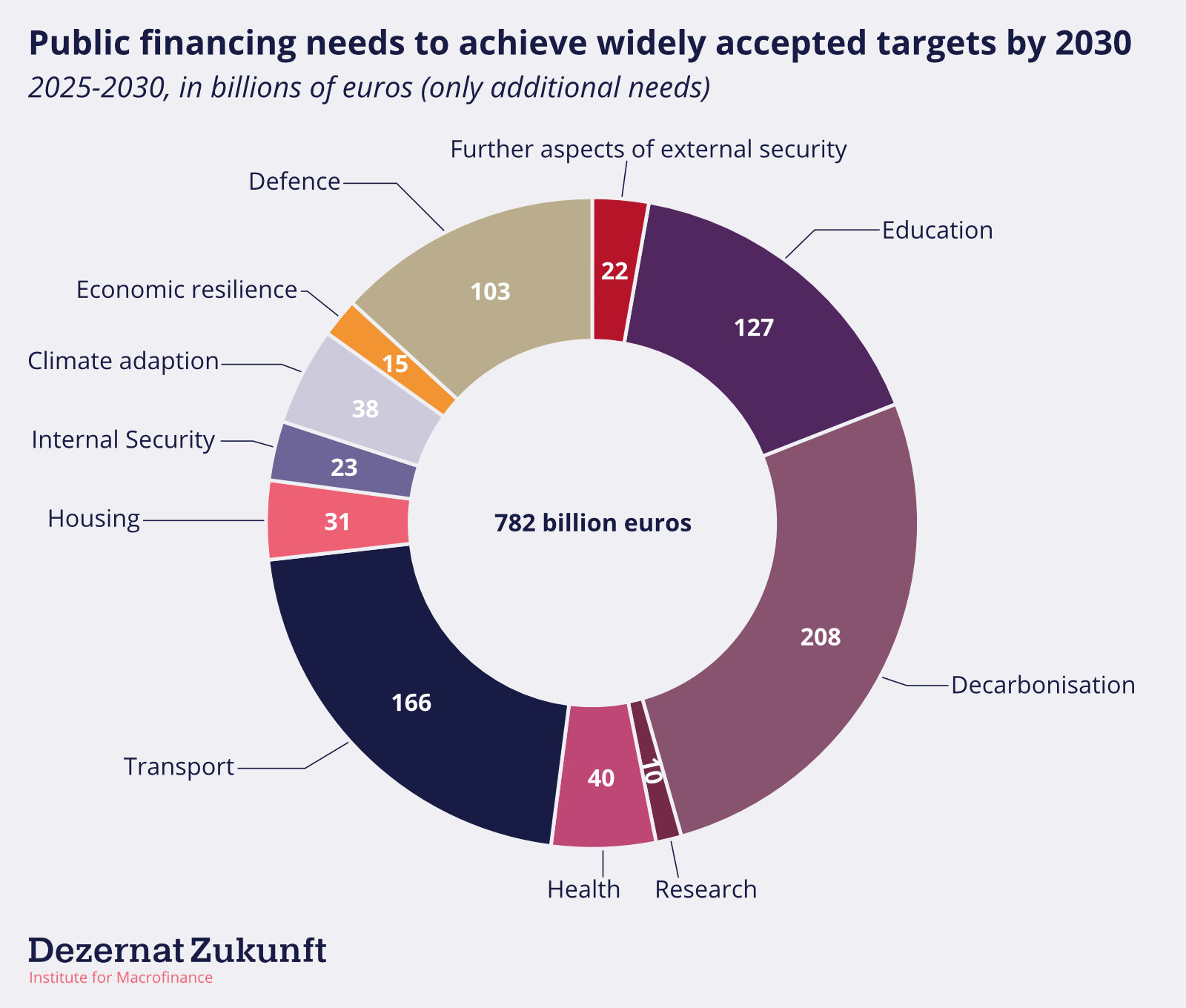
Public financing needs for the modernisation of Germany (Summary)
Felix Heilmann, Nils Gerresheim, Levi Henze, Dr. Vera Huwe, Axel Kölschbach Ortego, Dr. Max Krahé, Dr. Christian Mölling, Sara Schulte, Dr. Sabrina Schulz, Dr. Florian Schuster-Johnson, Philippa Sigl-Glöckner, Joke Steinwart, Janek Steitz
This study maps the additional public financing needed to achieve widely accepted targets in areas that are pivotal to Germany’s stability and future. Overall, we estimate an additional public financing need of 782 billion euros across aleudel levels of government from 2025 to 2030. This would correspond to an average of around 3 percent of gross domestic product (GDP) per year. Our findings are consistent with and complement other estimates of public needs published this year. The need for significant additional public financing for the future viability and modernization of the country can thus increasingly be seen as a consensus position.
This PDF is a translated summary. The full study is available in German.
Why did we write the paper?
Germany is currently facing a series of concurrent crises and a considerable modernisation backlog. In light of these challenges, the country is confronted with the historic task of implementing the necessary measures to ensure productivity, public services and security in the coming years.
In this context, we found it concerning that current budget debates are primarily concerned with budget cuts. Efficiency gains and spending shifts can play an important role, but we felt it was important to refocus the fiscal debate on achieving societal, economic and security goals. To provide a sound basis for this, we have identified where and to what extent additional public resources are needed to achieve widely accepted targets.
Through more than 70 expert discussions and a high-level workshop, we identified targets in twelve thematic areas that can be considered widely accepted. We then calculated the additional public financing needed to achieve these targets by 2030. We have documented our results and their derivation in detail, including the publication of our central Excel spreadsheet, so that readers can understand the calculations and adapt them to their own preferences (available in German). To our knowledge, this is the most comprehensive analysis of public financing needs currently available.
What did we learn?
Overall, we estimate that an additional 782 billion euros of public financing will be needed by 2030 to achieve widely accepted goals in education, decarbonisation, digitisation, research, health, transport, housing, internal security, climate adaptation, economic resilience, defence and further aspects of external security. This would amount to an average of around 3 percent of GDP per year.

All levels of government face significant financing challenges: the annual financing needs we identify for each level of government average 11 per cent of total current expenditure for the federal government, 5 per cent for the states and 10 per cent for the municipalities.
In a separate paper, we put forward proposals on how a large part of the identified additional needs could be met within the existing debt rules. However, this calculation of additional financing needs stands on its own and should be understood as a starting point for an open discussion on the best ways to meet the identified needs.

Um über unsere weiteren Veröffentlichungen auf dem Laufenden zu bleiben, abonniert gerne unseren Newsletter.
Hat dir der Artikel gefallen?
Teile unsere Inhalte



